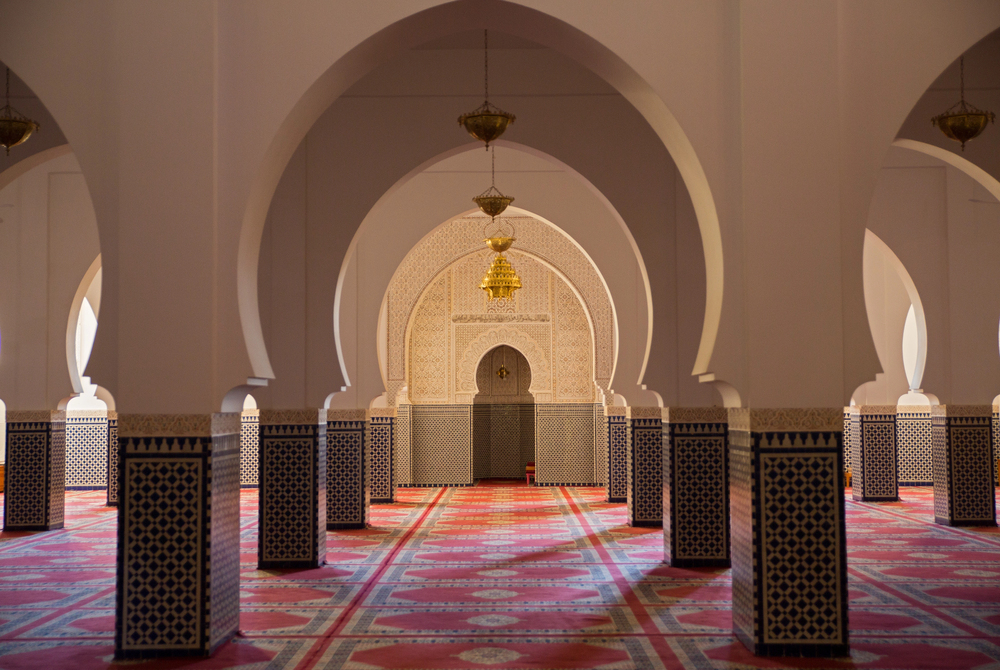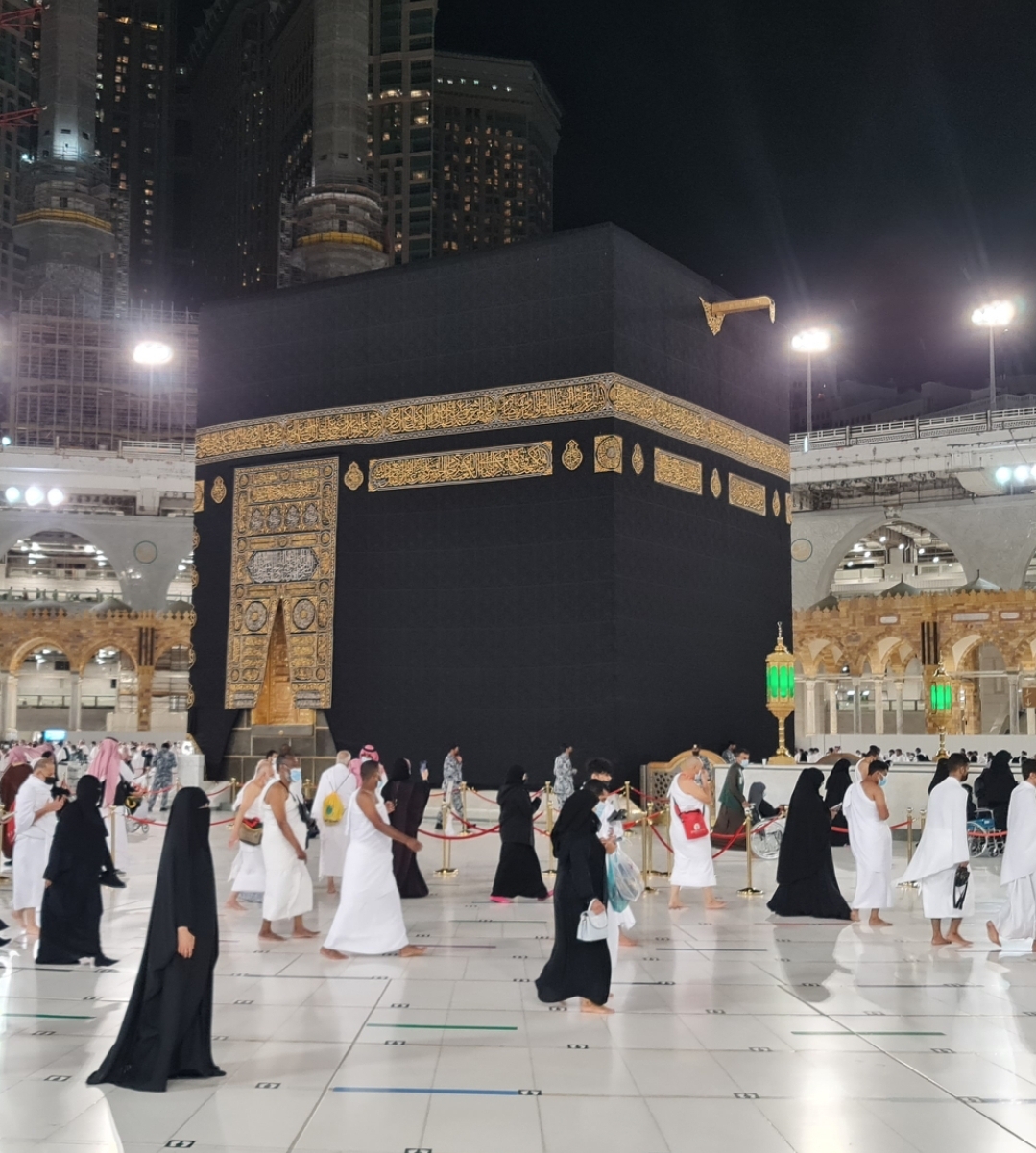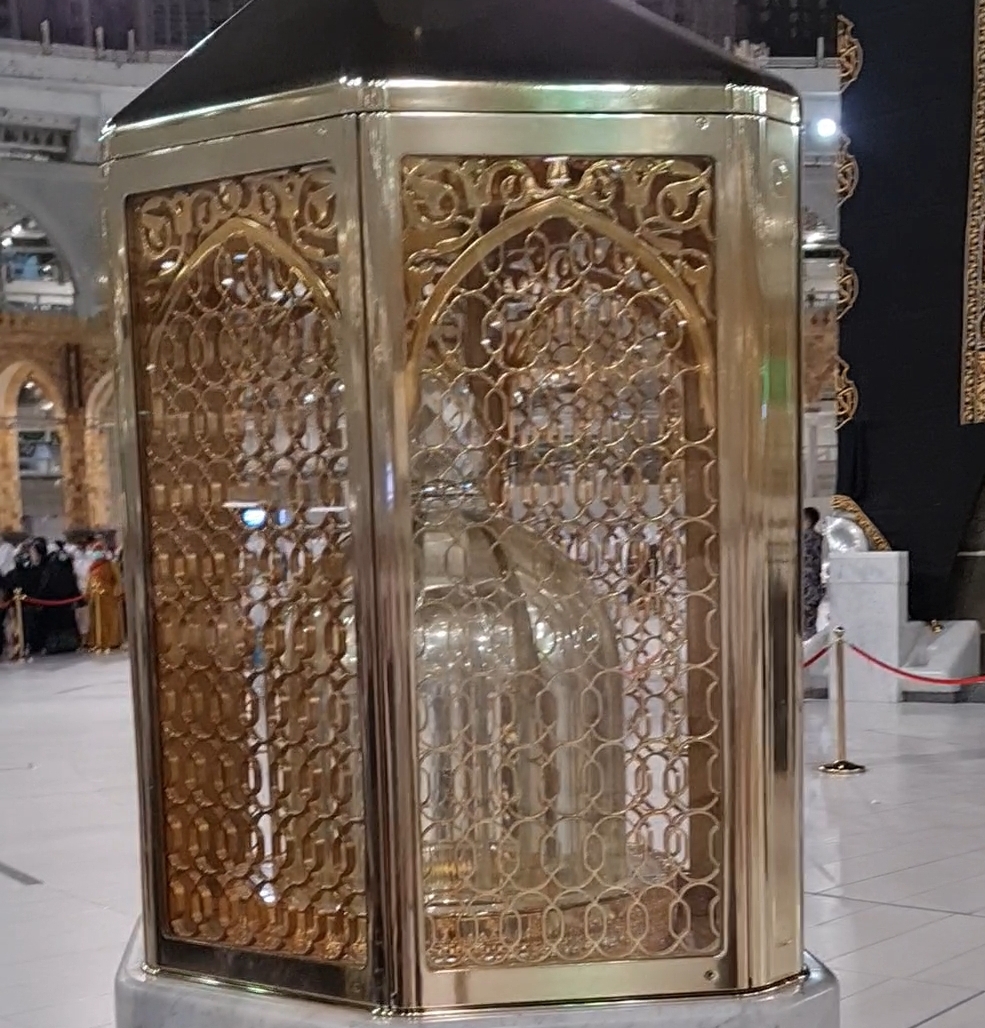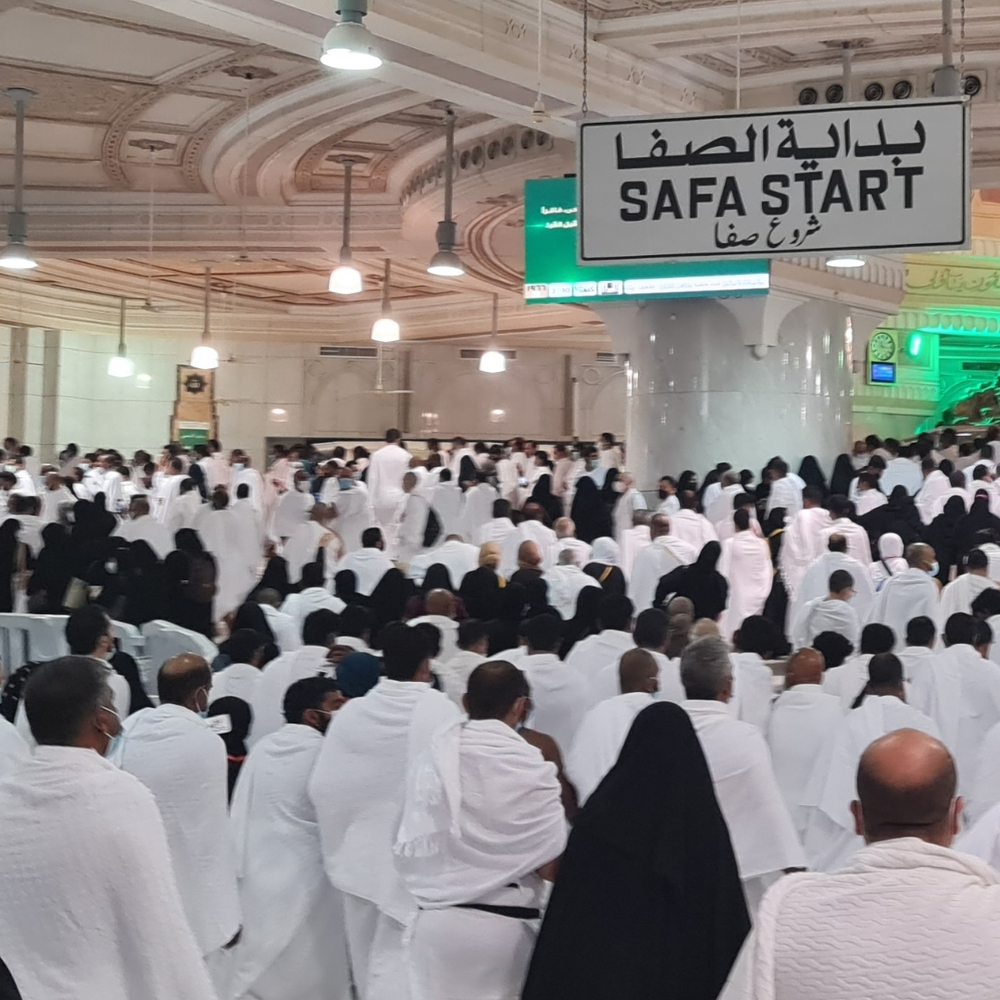About the Umrah Pilgrimage
Preparation and Intention (Niyyah)
- Preparation for Umrah begins at the Miqat, where it is sunnah (recommended) for believers to perform a ritual bath (ghusl). This act symbolizes physical and spiritual purification, preparing pilgrims for their sacred journey. Today, most pilgrims shower at their hotels before arriving at the Miqat.
- After bathing, pilgrims form the niyyah (intention) in their hearts to perform Umrah and recite the words: “Labbayk Allahumma Umrah” (“O Allah, I am at your service offering ‘Umrah”). This act reflects their devotion and readiness to carry out this important spiritual duty in response to Allah’s (Subhanahu Wa Ta’ala) call.


Conditional Umrah at the Time of Entering Ihram
If a person fears they may not be able to complete Umrah, it is permitted to make it conditional at the time of entering Ihram by saying: “fa-‘in habasani habisun fa-mahalli haythu habastani” (“If I am prevented [from continuing], then my exit from Ihram will be wherever I am stopped”). In situations where someone fears they may not be able to complete the Umrah due to illness, menstruation, or other unforeseen circumstances, Islam allows the pilgrim to make a conditional intention when entering the state of Ihram. By reciting this phrase, the person ensures that if they are unable to finish the ritual, they can exit Ihram without needing to offer any compensation or sacrifice. This allowance provides reassurance and flexibility for pilgrims facing uncertainty.
Reciting the Talbiyah
Pilgrims (Mu’tamir) should recite the Talbiyah: “Labbaik, Allahumma Labbaik, Labbaik La Sharika laka Labbaik. Inn-al-Hamda Wan-Ni’mata Laka wal-Mulk, La Sharika Lak.” (“I respond to Your call O Allah! I respond to Your call. You have no partner. I respond to Your call. All praise, thanks and blessings are for You. All sovereignty is for You. And You have no partners with You”). The Talbiyah is a special invocation prayer recited by pilgrims after entering the state of Ihram. It expresses complete devotion and readiness to perform the rituals of Umrah or Hajj. Pilgrims continuously recite the Talbiyah throughout their journey to Makkah, until they arrive at the Kaaba.
Arrival at the Kaaba and Performing Tawaf
Arrival at the Kaaba and the al-Ḥajar al-Aswad (“Black Stone”): When the pilgrim arrives at the Kaaba, they will first try to touch and kiss the al-Ḥajar al-Aswad, as the Prophet Muhammad (peace be upon him) did. However, this is not obligatory. It is important to remain calm and avoid pushing or causing a crowd. If it is not possible to reach the Stone, it is sufficient to face it, raise the right hand, and say: “Bismillah, Allahu Akbar” (In the name of Allah, Allah is the Greatest).
Tawaf: The pilgrim begins Tawaf at al-Ḥajar al-Aswad and performs seven counterclockwise circuits around the Kaaba, keeping the left shoulder facing the Kaaba. During Tawaf, the pilgrim may recite supplications (du‘a) and remembrance (dhikr). Between the Yemeni Corner and al-Ḥajar al-Aswad, it is recommended to recite the prayer: “Rabbana atina fi al-dunya hasanah…” (Our Lord, give us in this world [that which is] good…). At the Yemeni Corner, the pilgrim may touch it with the right hand but should not kiss it. If that is not possible due to the crowd, the pilgrim should continue Tawaf without raising the hand or saying “Allahu Akbar.” The seventh circuit ends upon reaching al-Ḥajar al-Aswad again. If possible, the pilgrim may again touch and kiss the Stone. This ritual symbolizes devotion to Allah (Subhanahu Wa Ta’ala) and the unity of the Muslim community.


Prayer Behind Maqam Ibrahim
After completing Tawaf, the pilgrim performs two units (rak’ahs) of prayer behind Maqam Ibrahim, if possible. Maqam Ibrahim is the place where the Prophet Ibrahim (peace be upon him) stood while building the Kaaba with his son Ismail (peace be upon him). The stone bears the footprints of Ibrahim (peace be upon him) and holds special significance in Islamic tradition.
First Rak’ah:
After reciting Surah Al-Fatiha, it is recommended to recite Surah Al-Kafirun.
Second Rak’ah:
After reciting Surah Al-Fatiha, it is recommended to recite Surah Al-Ihlas.
If, due to crowding, it is not possible to pray directly behind Maqam Ibrahim, the pilgrim may pray at any other available place within the Haram (the sacred mosque area). This prayer expresses gratitude and submission to Allah (Subhanahu Wa Ta’ala) and follows the practice of the Prophet Muhammad (peace be upon him).
Sa’i between Safa and Marwa
Sa’i between Safa and Marwah: After completing Tawaf, the pilgrim begins Sa’i, which is walking between the hills of Safa and Marwah seven times.
Starting at Safa Hill: The pilgrim ascends Safa, faces the Kaaba, raises their hands, and recites: “La ilaha illallahu wahdahu la sharika lah, lahul-mulku wa lahul-hamdu wa huwa ‘ala kulli shay’in qadir. La ilaha illallahu wahdah, anjaza wa’dah, wa nasara ‘abdah, wa hazamal ahzaba wahdah.” (“There is no god but Allah, alone without partner. To Him belongs all sovereignty and praise, and He is capable of all things. There is no god but Allah alone. He fulfilled His promise, supported His servant, and defeated the confederates alone.”).
Walking to Marwah: The pilgrim descends from Safa and walks toward Marwah. Between the two green markers, men lightly jog, while women continue walking at a normal pace.
Circuits: Each trip from Safa to Marwah or Marwah to Safa counts as one circuit. Seven circuits are completed, ending at Marwah.
Completion of Sa’i: After finishing Sa’i, the pilgrim shortens their hair or shaves their head (men), which marks the completion of the Umrah rites.


Completion of Umrah
Shortening or shaving the hair: After completing the Sa’i – walking seven times between the hills of Safa and Marwah – the pilgrim performs the final ritual that symbolizes the end of the Umrah. For men, this involves either shortening the hair or shaving the head completely. Shortening means trimming all areas of the scalp, while shaving involves removing all hair entirely. This act holds deep symbolic meaning, representing purification and renewal, as the pilgrim leaves behind sins and impurities, returning to a state of spiritual cleanliness. For women, the ritual is slightly different – they trim only a small portion of hair, usually the length of a fingertip, which also fulfills the requirement for completing Umrah.
With this, the Umrah is complete: Once the pilgrim has shortened or shaved their hair, the Umrah is officially completed. This moment marks the successful fulfillment of all Umrah rituals – from preparation at the miqat, through Tawaf and Sa’i, to the final act of hair cutting. The pilgrim may now return to daily life feeling spiritually renewed and refreshed, carrying with them the blessings and mercy gained during this sacred journey.
